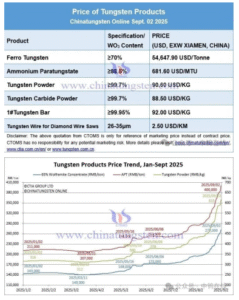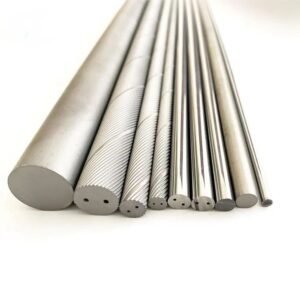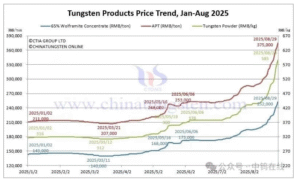In modern industrial manufacturing, stainless steel is a widely used material due to its superior resistance to corrosion, high strength, and durability. However, machining stainless steel presents significant challenges. Due to its hardness, toughness, and tendency to work-harden during cutting, it requires specialized tools capable of maintaining cutting efficiency while enduring high temperatures and mechanical stress. Cemented carbide inserts have become the ideal choice for efficiently machining stainless steel, thanks to their exceptional performance, high wear resistance, and durability.
In this article, we will explore why cemented carbide inserts are the preferred tool for stainless steel machining and how they help manufacturers achieve superior results in both efficiency and precision.
1. What Makes Cemented Carbide Inserts Ideal for Stainless Steel Machining?
Cemented carbide inserts are made from a composite material consisting of tungsten carbide (WC) particles bonded with a metal binder, usually cobalt (Co). The resulting material is incredibly hard, wear-resistant, and capable of withstanding high cutting forces and temperatures. This makes it an excellent choice for machining materials like stainless steel, which are notoriously difficult to cut with conventional tools.
The primary reasons why cemented carbide inserts are ideal for stainless steel machining are:
- High Hardness: Cemented carbide inserts maintain their hardness even at elevated temperatures, enabling them to cut through hard materials like stainless steel with ease.
- Wear Resistance: The hardness of carbide provides outstanding wear resistance, reducing tool wear during machining and increasing tool life.
- Thermal Stability: Cemented carbide inserts can withstand the high temperatures generated during cutting operations without losing their structural integrity or cutting performance.
- Precision: Carbide inserts are known for their dimensional stability, ensuring that the tools maintain their sharpness and cutting accuracy throughout their life.
Together, these properties make cemented carbide inserts an ideal solution for machining stainless steel, which can otherwise cause rapid tool wear and decreased productivity.
2. Superior Cutting Performance
The performance of cemented carbide inserts in stainless steel machining can be attributed to their superior cutting characteristics. When used for turning, milling, or other machining operations, cemented carbide inserts offer several key benefits:
- Sharp Edges for Clean Cuts: The fine grain structure of cemented carbide inserts enables them to have exceptionally sharp cutting edges. This sharpness reduces cutting forces and helps to produce clean, precise cuts on stainless steel workpieces.
- Stable Cutting Process: The toughness and wear resistance of carbide inserts ensure a stable cutting process. They are less prone to chipping or breaking under heavy loads, which is a common issue with less durable materials.
- Reduced Cutting Forces: The high hardness and wear resistance of carbide inserts allow them to maintain cutting efficiency, reducing the amount of force required to cut stainless steel. This leads to less vibration, more consistent cutting, and improved surface finish.
- Minimized Heat Generation: The ability of cemented carbide inserts to withstand high temperatures minimizes heat buildup during cutting. This is particularly important when machining stainless steel, as excessive heat can cause thermal damage to both the tool and the workpiece.
These factors combined ensure that cemented carbide inserts provide high cutting performance, improving both the speed and quality of stainless steel machining operations.
3. Extended Tool Life and Cost Efficiency
One of the main advantages of using cemented carbide inserts for machining stainless steel is their extended tool life. Since carbide inserts are highly resistant to wear and heat, they can last significantly longer than other types of cutting tools. This translates into fewer tool changes, less downtime, and lower production costs over time.
In addition to durability, cemented carbide inserts also help reduce costs by:
- Decreasing the frequency of tool replacements: As carbide inserts last longer, manufacturers can reduce the frequency of tool changes, saving money on tooling costs and minimizing downtime for machine tool changes.
- Increasing production efficiency: With a longer tool life and higher cutting speeds, manufacturers can achieve higher production rates without sacrificing quality. This leads to reduced cycle times and increased throughput, which directly contributes to cost savings.
- Reducing scrap rates: The precision and consistency of carbide inserts ensure that the finished workpieces meet quality standards, minimizing the risk of scrap or rework. This increases the overall yield of the manufacturing process.
By choosing cemented carbide inserts, manufacturers can significantly reduce their overall tooling costs while simultaneously improving productivity and machining quality.
4. Applications in Stainless Steel Machining
Cemented carbide inserts are versatile tools that can be used in a wide range of machining operations involving stainless steel. Some common applications include:
- Turning: Cemented carbide inserts are widely used for turning stainless steel components, especially in operations where high cutting forces are required. Their wear resistance and stability ensure that they maintain sharpness and precision throughout the cutting process.
- Milling: Carbide inserts are used for milling stainless steel in both rough and finish cutting applications. Their superior cutting performance ensures that milling operations are completed efficiently, resulting in high-quality surface finishes.
- Grooving and Parting: Cemented carbide inserts are ideal for grooving and parting stainless steel due to their ability to handle difficult cuts with minimal tool wear.
- Boring: In boring operations, carbide inserts maintain precision and can handle high cutting temperatures, making them suitable for stainless steel and other hard materials.
- Threading: For threading stainless steel, carbide inserts provide clean, precise cuts, ensuring that the threads are accurate and free of defects.
These applications demonstrate the wide range of uses for cemented carbide inserts in stainless steel machining, making them an essential tool for manufacturers in industries such as aerospace, automotive, and medical device production.
5. Challenges in Stainless Steel Machining and How Carbide Inserts Overcome Them
Machining stainless steel comes with a set of unique challenges that must be addressed to ensure optimal performance and efficiency. Some of the main challenges include:
- Work Hardening: Stainless steel is prone to work hardening, which means that as it is cut, the material hardens in the area near the cutting edge, making further cutting more difficult. Cemented carbide inserts are designed to handle this issue, maintaining sharpness and cutting ability even when dealing with work-hardened surfaces.
- High Cutting Forces: Stainless steel’s high strength results in high cutting forces, which can cause excessive wear and tear on traditional cutting tools. Cemented carbide inserts, due to their strength and wear resistance, can withstand these high forces without suffering damage.
- Heat Generation: The high strength of stainless steel generates significant heat during machining. Excessive heat can lead to premature tool wear, dimensional instability, and poor surface finishes. Carbide inserts are highly resistant to heat and can operate at high cutting speeds, which helps mitigate this problem.
- Surface Finish Requirements: Achieving a high-quality surface finish is critical in many stainless steel machining applications. The precise geometry of carbide inserts and their ability to maintain sharp cutting edges ensure that the surface finish of machined stainless steel components meets the required standards.
Cemented carbide inserts are designed to address all these challenges, ensuring efficient and high-quality machining of stainless steel.
6. The Future of Cemented Carbide Inserts in Stainless Steel Machining
As technology continues to advance, the demand for higher precision and faster production times in stainless steel machining will only grow. The future of cemented carbide inserts in this field looks promising, with ongoing improvements in materials science and coating technologies.
- Advanced Coatings: The development of new coatings, such as nano-coatings, will further enhance the performance of cemented carbide inserts in machining stainless steel, increasing their resistance to wear and heat and improving surface finishes.
- Microgeometry Optimization: The continuous refinement of tool geometry, including rake angles and edge profiles, will enhance the cutting efficiency and precision of carbide inserts in stainless steel machining.
- Sustainability: As manufacturers strive for more sustainable production methods, cemented carbide inserts’ durability and long tool life make them a more environmentally friendly option compared to tools that need frequent replacement.
These advancements will further cement the position of cemented carbide inserts as the tool of choice for machining stainless steel in the years to come.





